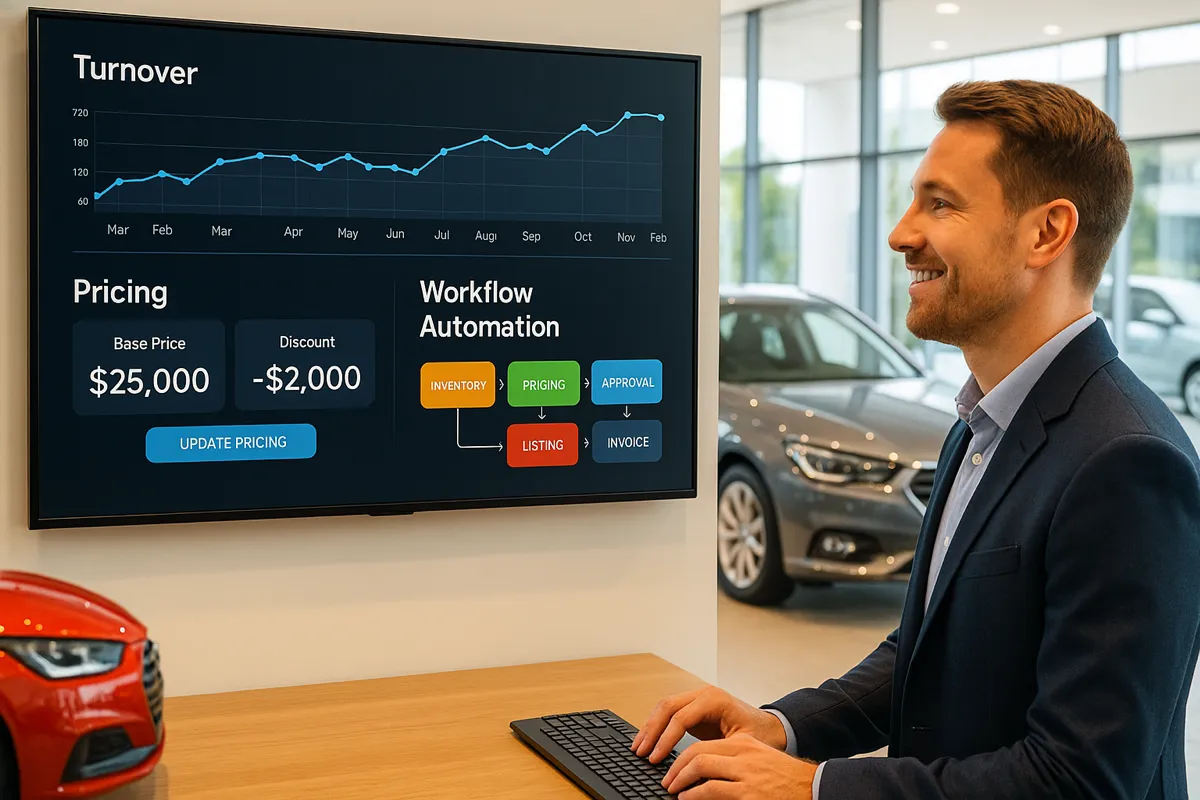
5 Operational Inefficiencies Solved by White-Label Auction Platforms for Dealers
Introduction
Operational inefficiency is the silent profit killer in dealer businesses. From underpriced stock to delayed sales, hidden costs erode margins fast. White-label auction platforms don’t just boost revenue—they fix operational leaks across the board.
This article dives deeply into five key inefficiencies—slow stock turnover, inconsistent pricing, buyer acquisition costs, manual admin overhead, and data blindspots —and shows how a branded auction channel powered by a modern tech stack solves them scaleably.
1. Slow Stock Turnover
Data: April 2025 saw the fastest used-car sales pace since tracking began — 27 days average, and 25 days for 5–10-year-old cars .
How white-label timed rolling listings, automated relisting, and buy-now options cut cycle times.
Example: Dealer cut average time-to-sale from 20 to 10 days, freeing forecourt space faster.
2. Inconsistent Pricing & Discounting
Pricing variance across staff and locations causes revenue erosion.
Auction platforms allow central price controls, reserve workflows, and buyer visibility.
Introduce AI price recommendations based on regional data to reduce guesswork.
3. Buyer Acquisition Costs
Marketplace fees and marketing budgets eat margins.
White-label reduces fee leakage and supports targeted email + local network marketing to existing buyers.
Example: Dealer reduced buyer acquisition cost by 40% while increasing registered bidders by 35%.
4. Manual Admin Overhead
Reconciling sales, buyer payments, DMS entries, and export paperwork is time-consuming.
Automated invoicing, stock sync, CRM integration, and shipping quote generation relieve operational strain.
5. Data Blindspots & Decision-Making
Without insights, dealers are flying blind.
A tiered reporting dashboard shows heatmaps, buyer trends, pricing impact, and CSR metrics.
Forecasting features help optimise future stock sourcing.
Implementation Plan
Audit your key efficiency pain points with staff.
Map how white-label features can plug leaks.
Identify priorities (e.g. admin automation first, then buyer reach).
Run a pilot with one stock category to prove ROI.
Conclusion
Operational efficiency is where real profits come from—faster sales, tighter pricing, and smarter buyer strategies. White-label auction tech isn’t just a platform—it’s an operational hub. Dealers who leverage the full suite of efficiency tools will outperform peers consistently.
“What operational challenges do white-label auction platforms solve for dealers?”
They speed up stock turnover, standardise pricing, reduce admin time, cut buyer acquisition costs, and give dealers better sales data to work with.
FAQs: Operational Inefficiencies Solved by White-Label Auction Platforms
How do white-label auctions speed up sales?
White-label auction platforms reduce time-to-sale by offering rolling listings, instant “buy now” options, and automated bidder notifications. Instead of waiting weeks for a physical auction slot, stock can sell in days, keeping forecourts moving and vehicles depreciating less.
Can I control pricing consistently across lots?
Yes. Dealers can set reserve prices, minimum increments, and automated adjustments directly in the platform. This standardises pricing across multiple branches or staff teams, removing inconsistencies that often erode margins.
Does this platform reduce my admin workload?
Significantly. Automated invoicing, stock synchronisation with Dealer Management Systems (DMS), and pre-filled export or VAT forms cut hours of manual data entry. Some dealers report saving 10–15 staff hours per week once auction automation is in place.
Can it help me lower my buyer costs?
Definitely. Traditional marketplaces charge listing fees, commissions, or buyer premiums that add up fast. With a white-label auction, you set the rules and keep more of the buyer fees in-house. Plus, your own branded buyer network is cheaper to maintain than constantly paying third-party platforms.
What analytics do I get on bidder behaviour?
White-label dashboards typically show where bidders are located, how often they engage, their preferred stock types, and even bidding patterns. This data helps dealers source vehicles strategically and target the right buyers more effectively.
Can I automate stock and CRM updates?
Yes. Stock is automatically synced to the auction platform, and buyer activity feeds directly into your CRM. This creates a closed loop where your marketing team can re-target active bidders, reducing the cost of future sales campaigns.
What’s a first step to test the platform’s efficiency?
Most dealers start with a pilot auction—for example, running 10–15 units in a white-label environment. This lets you measure days-to-sale, fees retained, and admin hours saved. From there, you can expand to full stock categories with confidence.
Further reading:

